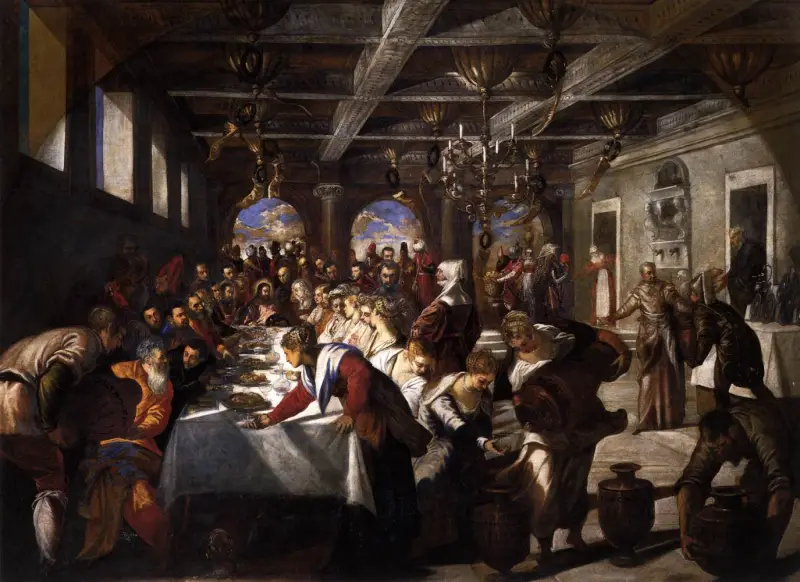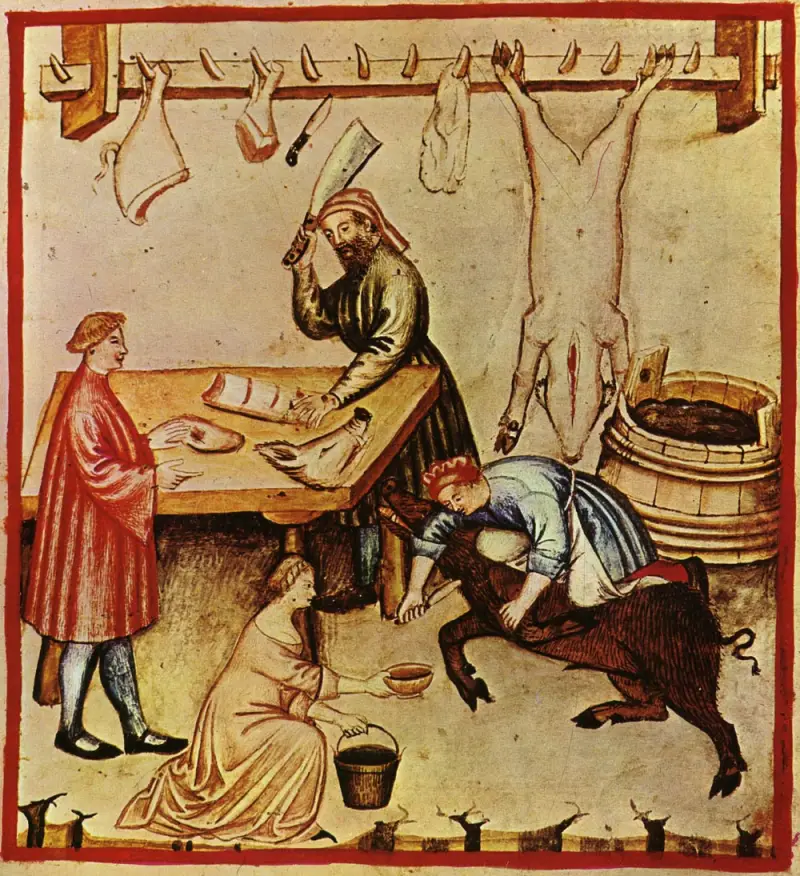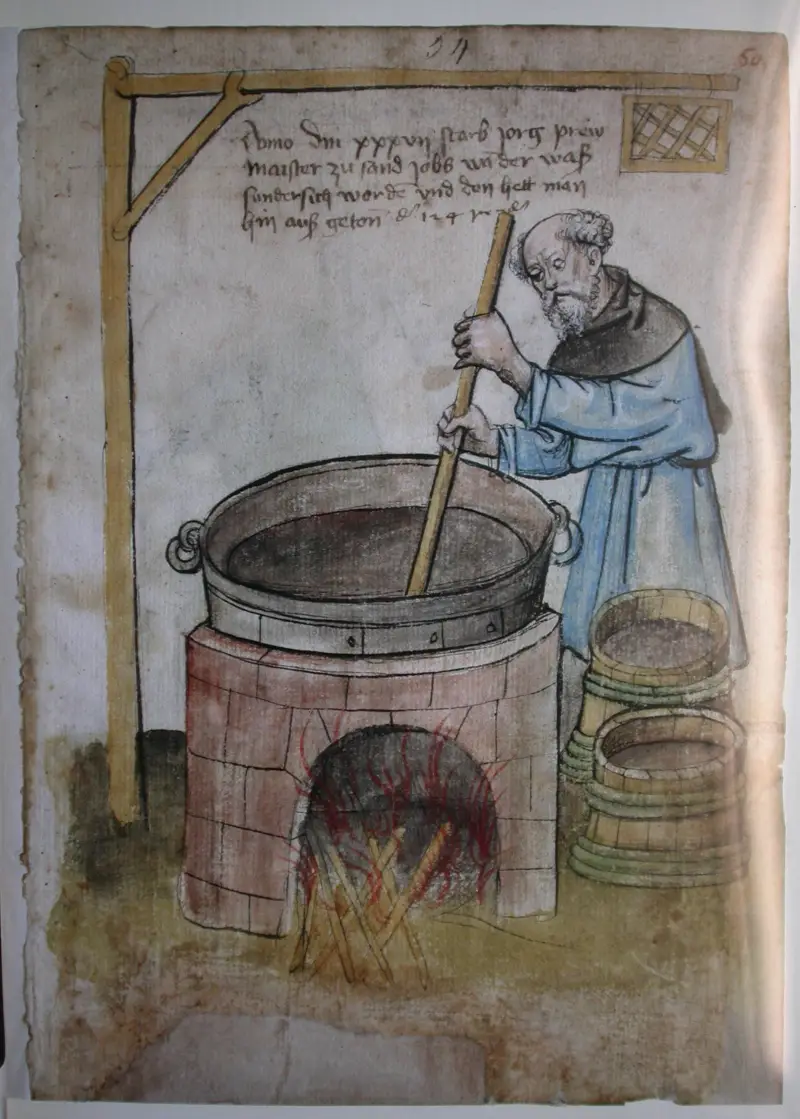How to prepare for a good medieval feast

Jacopo Tintoretto "The Wedding at Cana", 1561
I've always liked vintage stories, in which you can see what ordinary or wealthy people ate during the Middle Ages. The images of exquisite, savory pâtés look as appetizing as they are beautiful. And whole roasted pigs with an apple clenched in their teeth, plates of cakes stacked high, and, of course, goblets filled to the brim with wine evoke a wild appetite. I think we all love to eat hearty food. Although this is quite harmful.
Let's imagine you're throwing a themed party and want to impress your guests with your ability to recreate a medieval feast. If you're really trying to get it right, remember that the Middle Ages were before Europeans discovered and colonized America. This means that products such as tomatoes, corn and even turkey have not yet reached European tables.
We will devote the article to a more traditional English feast, where there were usually three main courses, as I learned from sources. Most often, sweet and savory foods were served together, which is quite unusual for us now.
First courses and snacks
It's time to plan the first dishes of the evening - appetizers and soups.
If you want everything to be particularly authentic, you should try to serve dishes in bread bowls and use wooden spoons. You can forget about forks - they were a great luxury in those days.
You can serve the soup first. For example, something like cabbage soup, where, in addition to cabbage, leeks are used. Also back then they loved to eat stew soup made from onions, beets, carrots, and salted bacon.
The first course was always served with a plate of pickled vegetables. In those days it was something akin to our canned mushrooms, cucumbers and tomatoes. Usually they served the same beets, carrots, turnips - there was little variety. Salads were also made from them, sometimes adding cheese or meat.
By the way, about cheese and meat plates.
Lamb was prepared from sheep that were about three years old and was very popular at that time. The aristocrats enjoyed venison. This meat was usually served cured - salami, prosciutto or skerpiket (a type of Scandinavian wind-dried lamb). Western Europe produced thousands of varieties of cheese, so you'd have plenty to choose from. The very first medieval cheeses were Gorgonzola, cheddar, brie and parmesan.
Well, where would we be without bread?
I have already talked about bread plates from which soups could be eaten. At that time, preference was given to white bread made from wheat, although poorer people ate black bread made from oatmeal and rye. You could cut the loaf into thick slices and serve it along with meat and cheese, making sandwiches. Or just put the bun on the table and the guests would break it themselves.
Main dishes
Perhaps the most popular meat at that time was pork. It was cheaper to keep piglets than to keep a cow. And because they were omnivorous, it was easier to find food for them. Nothing has changed since then.
Lamb was very popular, but sometimes it was the most expensive meat on the market. They ate both rabbits and hares. They also hunted wild boars and, if you were lucky, the boar meat was at the feast. Swans have always been considered a luxurious dish, and immediately after the Middle Ages, hunting them became prohibited in England. Peacocks were also sometimes served, often with their feathers intact and on display for all to see. They were prepared not so much for taste, but to demonstrate beauty. But they almost disappeared from European tables after the discovery of America. European people switched to turkeys.

People of that time prepared pies with pork, venison and poultry. They were also served as a main course.
Fish was also eaten in the Middle Ages, although much less frequently than today. The most common species were salmon, sturgeon and pike. In the 12th century, sea fish became more popular and were often sealed by salting or marinating in brine. Wealthier segments of the population tended to prefer fresh fish.
Drinks and desserts
Now let's move on to drinks.
In France and other regions of the Mediterranean where grapes were grown, wine was and remains extremely popular. England, which consumed more beer, imported wines from these regions only for wealthy families.
Beer was perhaps the most popular in all of Europe, since it could be brewed in any country. In the Middle Ages, its per capita consumption was about 300 liters per year! They drank beer with every meal - there was less alcohol for breakfast, and more for dinner. Beer was an alternative to water, which was not very pure.
Mead, made from distilled honey, wine, yeast and spices, was also common in those days. But strong drinks were not so popular. It is believed that the first vodka was produced around 1430 - towards the end of the Middle Ages.

Let's say you served your guests salads, soups, meat, pies. They were full and drunk. Now, of course, it's time for dessert. To make things easier, you could make puddings, pies, waffles, cakes, cookies. Or serve something more sophisticated, like dried fruit, if you had the money.
Laying
Sometimes the servants put food on plates for the guests, in other cases the guests themselves decided what to serve. There should have been a lot of drinks in jugs on the tables. Bowls and goblets were often made of wood, horn, leather, metal or even glass (if the owners could afford it). Guests usually brought their own knives.
Although napkins were used in ancient Roman and Greek times, they were rare during the Middle Ages. Guests often wiped their hands and faces with their sleeves. Napkins only became popular again in Europe during the Renaissance.
Large pieces of stale bread were used as trays. They could store food, and when the meal was over, the bread would absorb enough sauce or fat to be eaten. If it was not consumed by the guests at the banquet, it was distributed as alms to the poor.
The most senior guests of the evening were seated at a table positioned perpendicular to the rest of those present. This table was higher. The most important guests of the evening, say the lord and lady or the bride and groom, sat in the center of the table, and those who sat next to them were ranked in order of importance. Guests at the high table were more likely to be offered chairs, as opposed to everyone else sitting on benches.
There is an opinion that during this period of history, meals were characterized by squabbles, fights and other nonsense. But that's not true. Guests were expected to be civilized and follow the proper manners of the time.
There was often a bowl of water outside the hall where guests could wash their hands before and after eating. The water was probably boiled beforehand and often flavored with various fruits or flower petals. The most senior dinner participants received their own bowls to wash their hands separately from everyone else.
During or after the meal, guests were entertained by jesters, dancers, acrobats, jugglers and musicians. Banquet participants could play chess, checkers or shuffleboard, which, for example, Henry VII was crazy about. After the games, guests could still have a glass of alcohol, treat themselves to dessert, and then go to their rooms or homes.
Information